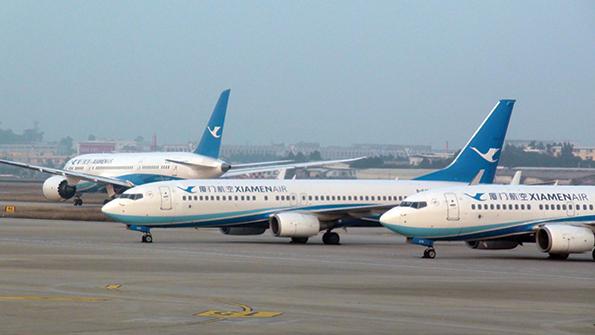COVID-19(2019新型冠状病毒肺炎)标志着航空运输业最长上升周期的戏剧性终结

过去十年,航空运输业经历了惊人的发展历程。它一直在快速增长,远快于通常与其关联的全球国内生产总值(GDP)。一些人甚至认为周期性是过去的现象,因为增长阶段比以往经历的要长得多。航空业的某些从业者,主要是美国航空公司,开始赚到真正的利润,而空客和波音则设法积累了空前规模的订单量。
The air transport industry has had a phenomenal 10 years. It has been growing fast, far more rapidly than the global GDP to which it is normally linked. Some even contended that cyclicality is a phenomenon of the past because the growth phase was much longer than previously experienced. Some in the industry, mainly U.S. airlines, started to actually make proper money, and Airbus and Boeing managed to build up order backlogs of unprecedented sizes.
周期不再存在的想法一直只是个神话。相反,该行业正处于数十年来最严重的危机之中,比2003年和2004年严重急性呼吸系统综合症(SARS)爆发带来的危机还要深重。自2019年3月以来,由于波音737 MAX机队的停飞,使其增长能力受到一定程度的阻碍,继而又因美国政策导致的全球贸易下滑而受挫,现在预计亚太地区航空公司的收入也将下降。
The idea that cycles no longer exist has always been a myth. Instead, the industry is in the middle of the deepest crisis in decades, deeper than what it experienced during the fallout of the Severe Acute Respiratory Syndrome (SARS) outbreak in 2003 and 2004. Partially hampered in its ability to grow by the grounding of the Boeing 737 MAX fleet since March 2019, then bruised by a U.S. policy-induced slump in global trade, Asia-Pacific airline revenues are now predicted to fall off a cliff.
COVID-19冠状病毒爆发的影响是严重的、多方面的、复杂的,对某些航空公司而言可能是灾难性的。它们相互重叠,相互矛盾,有时甚至是对MAX(停飞的机型)危机的补充,具有讽刺意味的是,这对那些拼命削减运力的航空公司反而有利。
The effects of the COVID-19 coronavirus outbreak are severe, manifold, complex and could be catastrophic for some airlines. They overlap, contradict and sometimes complement the MAX crisis—an aircraft whose absence, ironically, is turning out to be beneficial to airlines desperately trying to shed capacity.
值得注意的是,在COVID-19成为棘手问题之前的几个月,危机的迹象已经显而易见了。航空咨询公司Avinomics的执行合伙人菲利普·戈德金(Philipp Goedeking)写道:“2019年上半年,中国各大国际航空公司出现了强烈而重复的压力信号,比此前想象的更为严重,很可能归因于美中贸易冲突的影响。此外,香港航空公司也受到香港抗议活动的影响。新冠肺炎的影响被强烈放大,但也掩盖了这些因素。”他指出,中国的每周客座率实际上在2019年10月已达到顶峰,远早于疫情爆发。
Notably, signs of crisis were visible months before COVID-19 became an issue. “The first half of 2019 saw strong and repetitive stress signals for the major international Chinese airlines, more severe than previously thought, most likely attributable as an impact of the U.S.-China trade conflict,” Philipp Goedeking, the managing partner of airline consultancy Avinomics wrote. “Hong Kong airlines were additionally hit by the fallout of the protests in Hong Kong. Corona strongly amplified but also masked these factors.” He pointed out that weekly seat capacity in China actually peaked in October 2019, well before the outbreak.
即使在COVID-19危机爆发两个月后,也没有人能够准确预测对航空业及其供应商的经济影响到底有多大。国际航空运输协会(IATA)已经按照SARS的模式进行了模拟假设,对此做出了第一次估计。由于对出行的恐惧减少了旅游需求,假设COVID-19将相对较快地得到控制,人们对旅游的信心也会迅速恢复。要使这种情况成为现实,最迟必须在未来1-2个月内在遏制新冠肺炎方面取得进展。
Even two months into the COVID-19 crisis, no one can accurately predict the true dimension of the economic consequences for the airline industry and its suppliers. The International Air Transport Association (IATA) has made its first estimates, modeling assumptions on the pattern from SARS. That assumes COVID-19 will be under control relatively fast and that confidence in travel revives as quickly, as fear of travel has reduced demand. For that scenario to become a reality, progress in containment has to be made soon—in the next 1-2 months at the latest.
即使假设COVID-19将依循SARS的先例,其后果也要严重得多。2003年,亚太地区的交通量下降了5.1%。IATA表示,2020年可能下降8.2%。17年前,中国航空公司运营的飞机不到900架。他们现在拥有的机队总数超过4000架,从绝对数字来看,影响要大得多。IATA预计,今年全球航空运输量可能下降0.6%,这是自2008-09年全球金融危机以来航空业首次没有增长。
Even assuming COVID-19 will follow the SARS precedent, its consequences are much worse. In 2003, Asia-Pacific traffic declined 5.1%. IATA says it could fall by 8.2% in 2020. Seventeen years ago, Chinese airlines operated less than 900 aircraft. They now have a combined fleet of more than 4,000, leading to a much bigger impact in terms of absolute numbers. IATA assumes global air traffic could fall by 0.6% this year, the first time the industry is not growing since the 2008-09 global financial crisis.
在中国,航班的减少量非常大。由于需求不足,各航空公司本月已暂停大部分定期航班。根据当地数据机构VariFlight的数据,2月19日,他们预计运营6300个航班,或其计划的18300个航班的34%。五家中国航空公司没有运营。2月份,这个数字每天都在变化。
In China, the flight reductions have been extremely dramatic. Due to lack of demand, the airlines have suspended most scheduled flights this month. On Feb. 19 they expected to operate 6,300, or 34%, of the 18,300 flights in their schedules, according to local data agency VariFlight. Five Chinese airlines were not operating. That number has varied day to day in February.
考恩的高级研究分析师海兰•贝克尔(Helane Becker)写道:“我们仍然认为,[中国市场]的交通量至少需要一年时间才能反弹。”“我们有一些报告显示,交通恢复正常至少需要18个月。”
“We continue to believe it will take at least one year for [Chinese market] traffic to rebound,” wrote Helane Becker, a senior research analyst with Cowen. “We have some reports that suggest it will take at least 18 months for traffic to return to normal.”
这条消息是Jens Flottau, Sean Broderick, Bradley Perrett, Adrian Schofield在Aviation Week & Space Technology发表文章的摘要。 欲了解新型冠状病毒爆发和MAX停飞对海航和澳航等航空公司以及航空租赁公司的影响,请阅读全文 (订阅内容)。